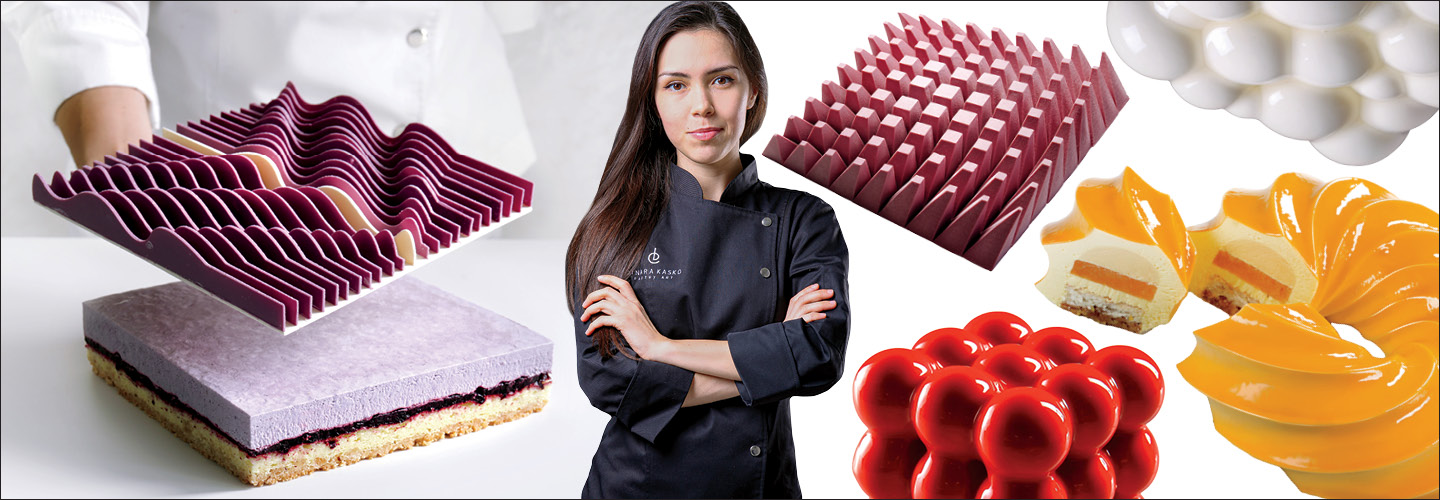Scholastic Art: What is your job?
Dinara Kasko: I am a pastry designer. I design and print my own cake molds using a 3-D printer. I also develop recipes that work well with my molds, and I teach online classes for making cakes using my molds.
SA: What do your molds look like?
DK: My style is geometric, minimalist, with clean lines. But each mold is different. One looks like a box of cherries in an invisible box (bottom left). Another looks like a set of cubes. One looks like a circle of folded paper—it’s inspired by the art of origami.
SA: How do you design a cake mold?
DK: The design process always starts with an idea for a cake. Then I create a 3-D sketch of my idea on my computer. After I am happy with my sketch, I print a model of the cake. Then I pour liquid silicone over the model, let it harden into a flexible plastic, peel it off the model—and I have my mold!
SA: How long does it take to make
each mold?
DK: Depending on the project, I might need between a week and a month until I am satisfied with the model. What’s interesting is sometimes I can be very happy with how the cake looks as a sketch on my computer, but after I print it—when I can see and touch the model—I understand it better. I recognize the adjustments I need to make—make it smaller, make it bigger, change the top part, change something else. I might make adjustments in my sketch and print a model cake in plastic several times before I am finally happy with it.
SA: How did you become a pastry designer?
DK: When I was a kid, I dreamed of being an architect. But after college, I began baking and that was more interesting to me. I wasn’t satisfied with the traditional molds for cakes though. I decided to make my own. Why not? So I made a mold that reflected my style. And then I made more. Little by little, I changed my career from architect to pastry designer. Today I don’t work with interiors or exteriors of buildings. Instead, I work with a small object—a cake mold. But it is still design. I just changed the purpose and scale.

